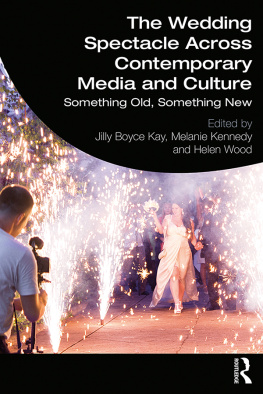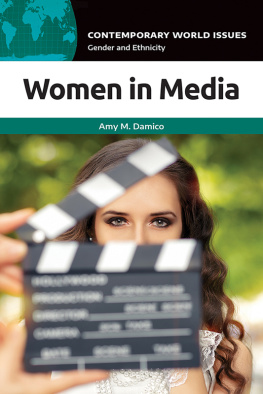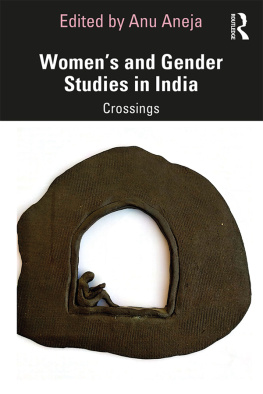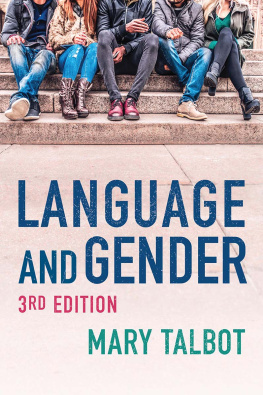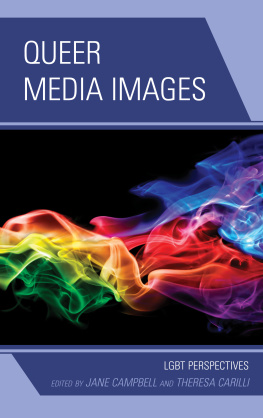Gender in the MediaKey Concerns in Media Studies
Series Editor: Andrew Crisell
Within the context of todays global, digital environment, Key Concerns in Media Studies addresses themes and concepts that are integral to the study of media. Concisely written by leading academics, the books consider the historical development of these themes and the theories that underpin them, and assess their overall significance, using up-to-date examples and case studies throughout. By giving a clear overview of each topic, the series provides an ideal starting point for all students of modern media.
Published
Paul BowmanCulture and the Media
Andrew CrisellLiveness and Recording in the Media
Tim DwyerLegal and Ethical Issues in the Media
Gerard GogginNew Technologies and the Media
David HendyPublic Service Broadcasting
Shaun MooresMedia, Place and Mobility
Sarah NiblockMedia Professionalism and Training
Sean RedmondCelebrity and the Media
Niall Richardson and Sadie WearingGender in the Media
Forthcoming
Steve CrossReligion and the Media
Terry Flew and Stuart CunninghamMedia Economics
Gerard Goggin and Kathleen EllisDisability and the Media
Brian McNairNews Media
Monika MetykovaEthnicity and the Media
Kate ORiordanScience and the Media
Sue TurnbullMedia Audiences
Gender in the Media
Niall Richardson
and
Sadie Wearing
Niall Richardson and Sadie Wearing 2014
All rights reserved. No reproduction, copy or transmission of this publication may be made without written permission.
No portion of this publication may be reproduced, copied or transmitted save with written permission or in accordance with the provisions of the Copyright, Designs and Patents Act 1988, or under the terms of any licence permitting limited copying issued by the Copyright Licensing Agency, Saffron House, 610 Kirby Street, London EC1N 8TS.
Any person who does any unauthorised act in relation to this publication may be liable to criminal prosecution and civil claims for damages.
The authors have asserted their rights to be identified as the authors of this work in accordance with the Copyright, Designs and Patents Act 1988.
First published 2014 by PALGRAVE MACMILLAN
Palgrave Macmillan in the UK is an imprint of Macmillan Publishers Limited, registered in England, company number 785998, of Houndmills, Basingstoke, Hampshire RG21 6XS.
Palgrave Macmillan in the US is a division of St Martins Press LLC, 175 Fifth Avenue, New York, NY 10010.
Palgrave Macmillan is the global academic imprint of the above companies and has companies and representatives throughout the world.
Palgrave and Macmillan are registered trademarks in the United States, the United Kingdom, Europe and other countries
ISBN 978-0-230-28473-9
This book is printed on paper suitable for recycling and made from fully managed and sustained forest sources. Logging, pulping and manufacturing processes are expected to conform to the environmental regulations of the country of origin.
A catalogue record for this book is available from the British Library.
A catalog record for this book is available from the Library of Congress.
Typeset by Cambrian Typesetters, Camberley, Surrey
Printed in China
Contents
Introduction: Gender and Representation
What is Sex? What is Gender?
A few years ago a rather blunt acquaintance announced that he thought gender studies was a pointless discipline and a complete waste of time. After all, he said, we are all either male or female. What is there to discuss? Not withstanding that there actually is quite a lot to discuss about whether bodies are male or female, this unenlightened acquaintance was making a commonplace error in that he was confusing gender with sex.
The foundation of gender studies is the distinction that we can draw between sex and gender. Sex refers to the description of chromosomal, anatomical sex male and female. In other words, sex is biological. Although there are cases of bodies which are intersexed, a bodys sex can, for the most part, be (relatively) easily determined as it is decided by chromosomal, anatomical detail.
Gender, unlike sex, is not biological but cultural. Gender refers to masculinity and femininity and describes learned patterns of behaviour or performance. Therefore, what makes a person male or female is grounded in biology and, in that respect, is universal. How a person performs or does masculinity and femininity is cultural and as such may vary according to culture or context. What is deemed appropriate femininity or masculinity in one age or culture may be entirely different from the performance expected of women or men in contemporary, Western culture. To use some obvious examples, in 18th-century Western culture it was deemed appropriate for both sexes, male and female, especially people of the higher social echelons, to wear heavy, lead-based make-up and voluminous powdered wigs. In other words, for a man to wear obvious make-up was considered an appropriate performance of masculinity within that specific cultural context. Similarly, men would wear extremely ornate clothes, often exposing their legs, wear high heels and move in a theatrical, flamboyant fashion. This was considered appropriate masculinity. In contemporary culture, such a performance would usually be considered feminine and inappropriate for a male body.
The point is that these ideas of what makes appropriate masculinity and appropriate femininity do not simply happen. We dont automatically know how to behave and represent ourselves simply because of our biological sex. Instead, we learn acceptable patterns of behaviour from our culture. This is why, when people ask about the gender of a new born baby, they are asking an inappropriate question. Babies are not gendered. They are certainly sexed (male or female), but because they have had no interaction with culture they are not yet performing gender. In a similar fashion, it would be ridiculous to ask about a babys social class identification as, once again, social class is a cultural construct which comes from integration within a cultural regime.
However, as we all know, many parents evidence a desire to make the babys gender visible to everyone not least in the colour coding of the babys clothes. A boy should be dressed in blue and a girl in pink or so culture tells us. This almost paranoid obsession with gendering the baby, making the babys gender evident for everyone to see, is the first step in a lifelong commitment to maintaining gender propriety. Without necessarily being fully conscious of it, parents police their childrens gender, teaching them from an early age what is deemed appropriate femininity and masculinity. For example, while both boys and girls may be given toy dolls to play with the girls dolls will either be babies, thus teaching her the role of maternal nurturing, or fashion dolls (the most famous is Barbie) with which the girl child will learn the importance of grooming and making-up the body. The boy child will also be given dolls to play with but his will be action dolls soldiers or super-heroes with which he will be encouraged to dramatise fights and battles. Commonplace occurrences in public playgrounds (the one described here was witnessed by one of the authors of this book) exemplify this kind of gender socialisation. Two children a boy and a girl have dolls to play with. The boy is playing with his action figures and dramatising a veritable blood-bath in which one action figure pulverises the other, to the point where the victorious doll is jumping on the loser doll the boy smashing the doll up and down to crush the losing doll to a pulp. The mother is witnessed applauding this and telling her son how wonderful he is. The female child had been playing happily with her baby doll (it was one of those dolls that can suck, with loud squelches, on a dummy) but, when the girl saw the fun of her brothers game, she wanted to join in with the fighting and clobbering of his dolls. The mother, however, intervened to stop this and the girl child was reminded that she should play with her suckling baby doll instead.


